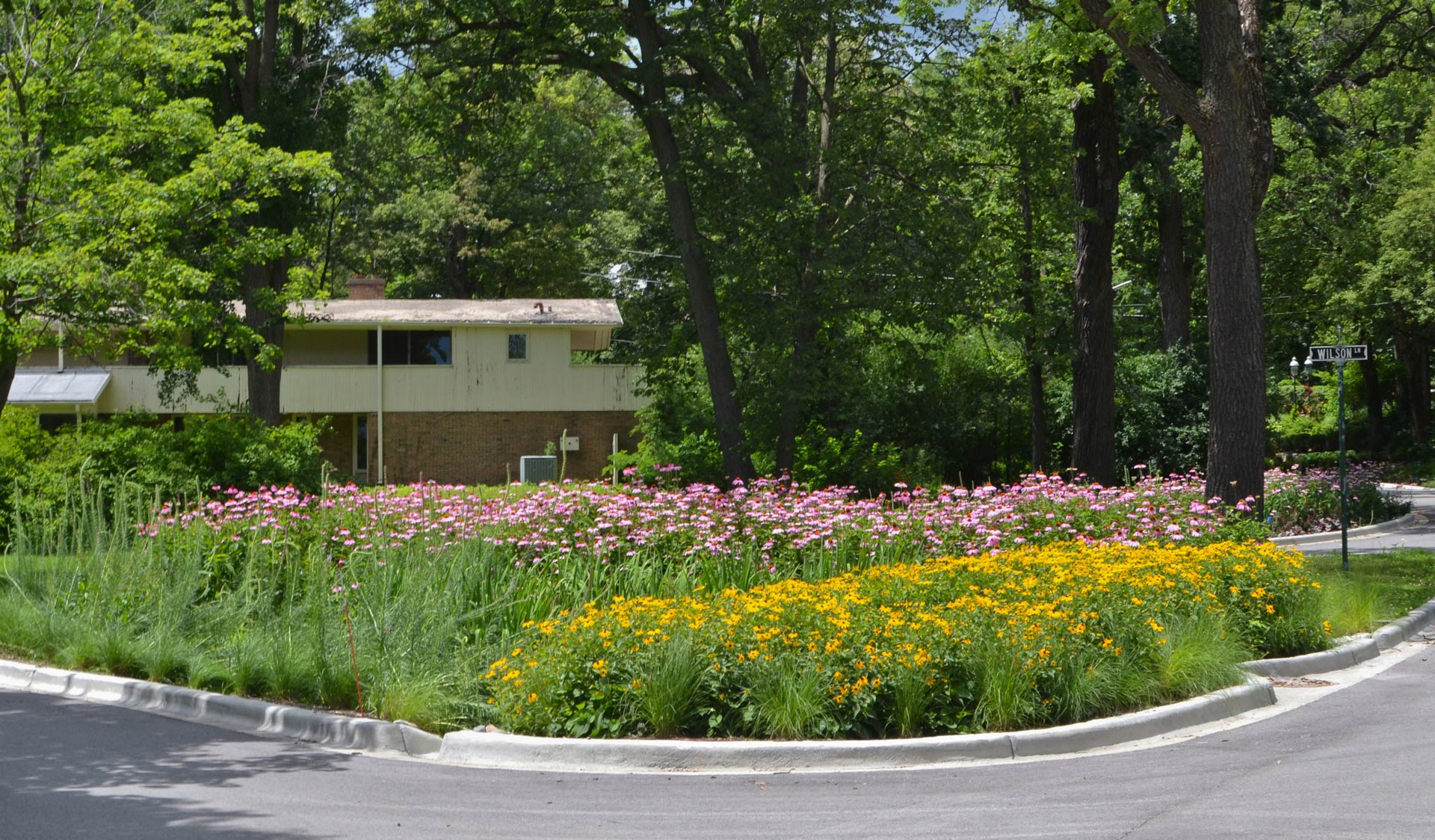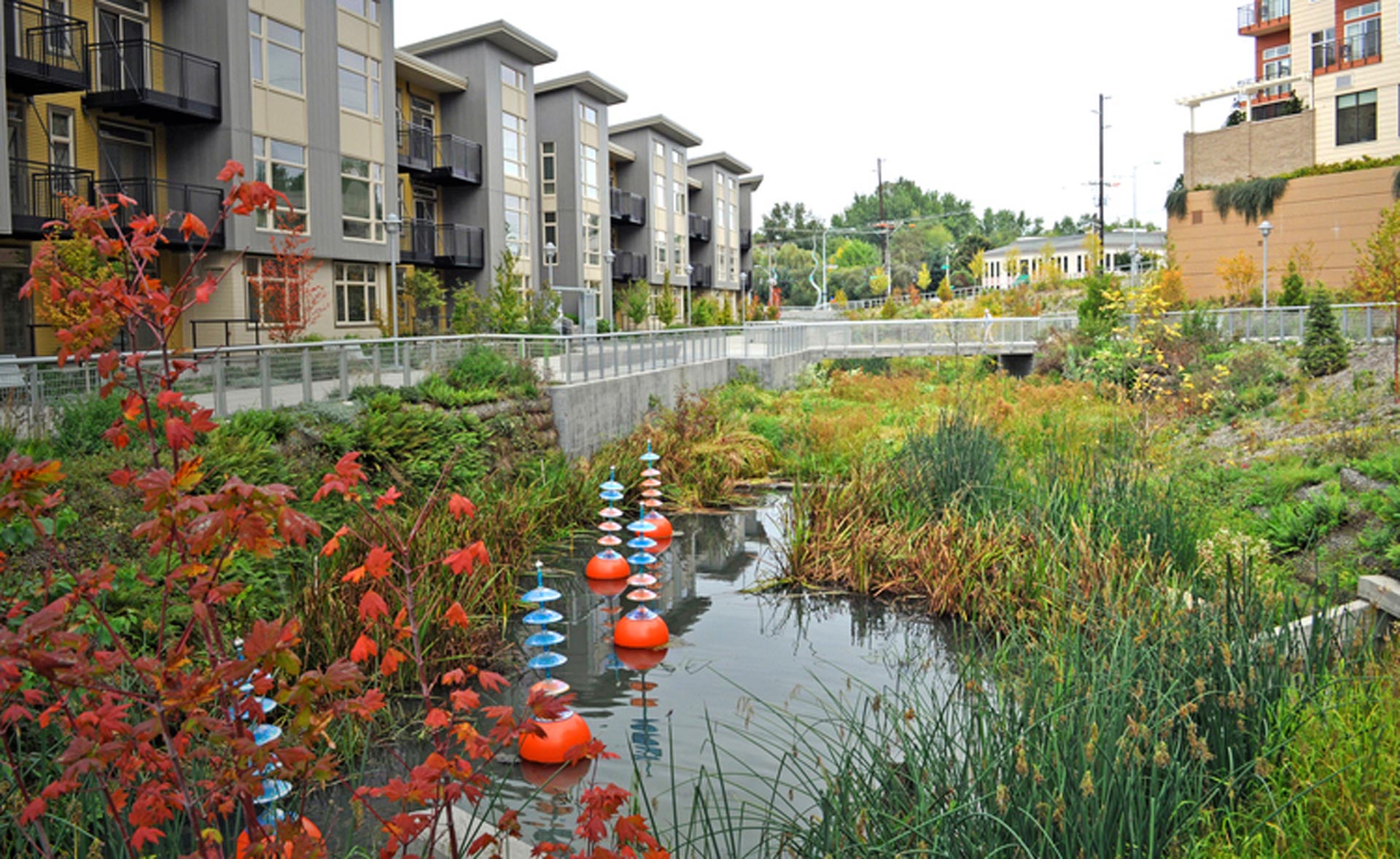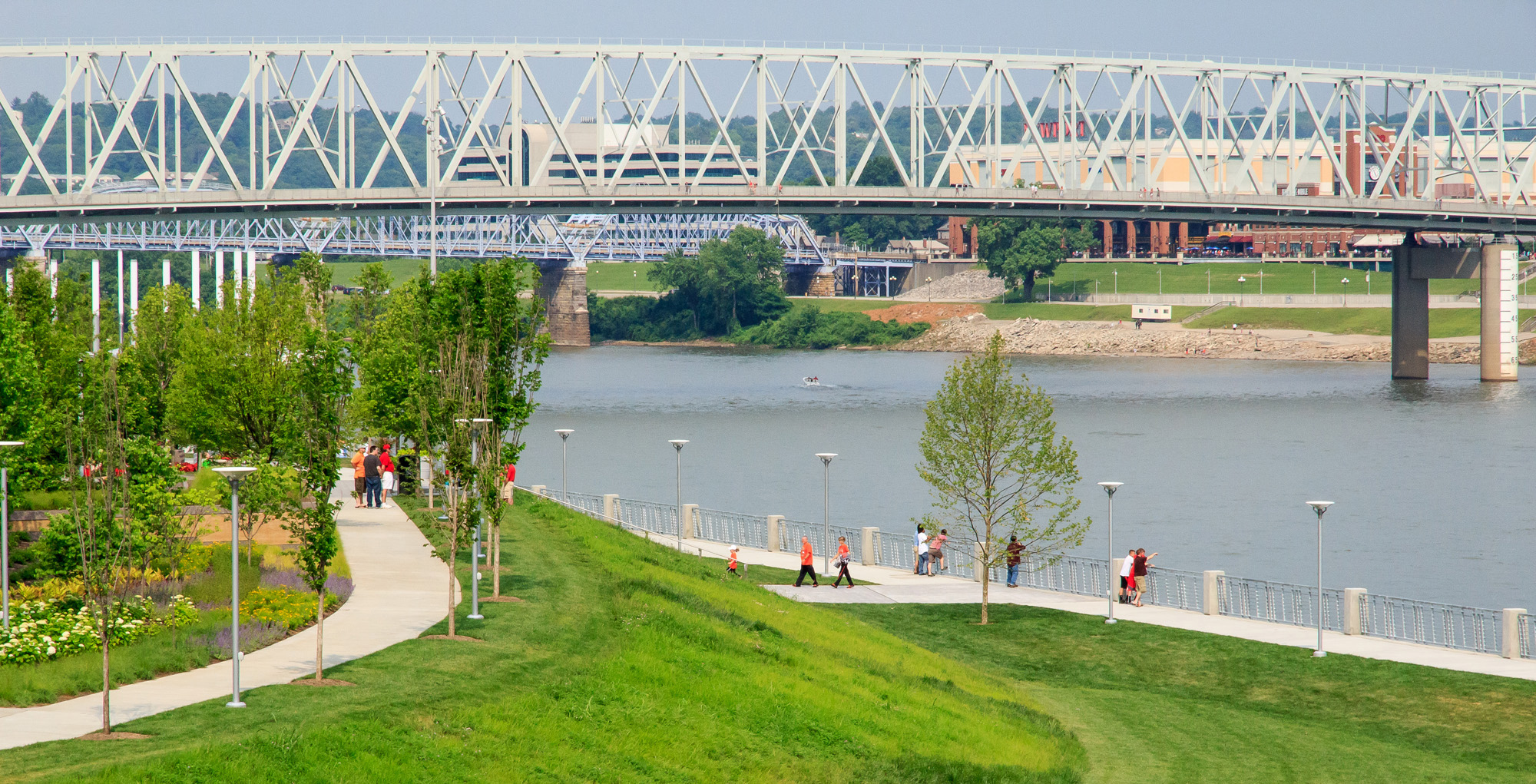Lick Run Watershed, Cincinnati, Ohio
Challenge
Cincinnati is one of the nation’s top five combined sewer overflow (CSO) dischargers and is under a federal consent order to reduce its overall discharge. For years, heavy rainfall caused stormwater to back up the city’s combined sewers – leading to building damage and water pollution in the city and in the Ohio River. Every year, approximately 14 billion gallons overflow from both sanitary-only sewers and storm and sanitary sewers, contaminating the watershed. On the west side of Cincinnati, the Lick Run Watershed encompasses about 2,900 acres and is home to the Metropolitan Sewer District (MSD) of Greater Cincinnati’s largest combined sewer, making this location a priority area for better waste management.
Project Details
- Location: Cincinnati, Ohio
- Population: 298,165
- Cost: $193 million (in 2006 dollars); $800,000 annually (in 2012 dollars)
- Strategies: Bioswales, Daylighting Rivers and Streams, Stormwater Detention Basins, Rain Gardens, Waterfront Parks
- Benefits: Updated Sewer Tunnels, CSO Reduction, Improved Water Quality, Increased Job Opportunities, Green Spaces and Parks, Economic, Ecological, and Health
History
Cincinnati’s first storm sewer system was constructed in 1828 to collect and move stormwater away from the city. As the end of the century neared, these sewers were converted to combined sewers. By 1940, all of Cincinnati’s residents were granted access to wastewater sewers. During this decade, residents experienced the negative effects of combined sewage systems and recognized the importance of separate sanitary and storm sewers.
In 1968, the MSD was created to manage the wastewater system throughout most of Hamilton County. This structural change in waste management transferred sewer maintenance responsibilities from Cincinnati’s Highway Maintenance Division to the MSD, while the City Engineering Division remained responsible for the city’s storm sewer design. Throughout the rest of the millennium, responsibilities in Cincinnati’s wastewater and stormwater management shifted between city agencies.
In 1999, MSD entered negotiations with the EPA, DOJ, and the State of Ohio to establish a formal strategy to address the ongoing water quality problems in the city. These negotiations resulted in the establishment of two Consent Decrees and the design and implementation of a natural infrastructure approach to bring the district back into Clean Water Act compliance.

Solution
The city and the EPA knew that converting Cincinnati’s entire waste management system from combined sewers to separate sewers would be too costly. Instead, they approached the problem from the opposite direction, creating a holistic program called Project Groundwork that aims to improve water quality, public health and the entire community. Project Groundwork is comprised of six projects – one of them being The Lick Run Watershed Strategic Integration Plan. This specific project aims to eliminate nearly 400 million gallons of combined sewer overflow each year from Cincinnati’s largest combined sewer by reducing the amount of stormwater entering the combined sewers. The design calls for new storm sewers, bioswales, stream restoration, stormwater detention basins, bioinfiltration gardens and a mile-long constructed waterway.
By 2018, the mile-long constructed waterway will be complete, revitalizing a stream that was buried 100 years ago by bringing it back to the surface. Currently, this stream, known as Lick Run, only sees daylight in one location; in every other area, the stream is underground – confined to a 19-inch-wide pipe. In 2013, the MSD began the demolition of 20 residential and commercial buildings to make way for the stream, along with trees, access paths, and bike trails. Additionally, new bioswales and floodwater detention basins will be installed along adjacent avenues and streets. Two more historical streams are set to be daylighted by the summer of 2017.
Finally, a new Stormwater Conveyance System with a naturalized waterway and an underground stormwater conveyance box is planned to be completed in 2018. Formerly called the Valley Conveyance System (VCS), the Lick Run Greenway is one of the key elements of the Lick Run Project. This 1.5-mile-long conveyance system contains wetland forebay and bioinfiltration basins, pond areas, bridges, landscaping and planting upgrades, stormwater planters, and a recirculation system. These various structures will improve water quality as stormwater travels to Mill Creek – one of the Lick Run Watershed’s waterways.
Funding
The Lick Run Project cost approximately $195 million to design and construct. The community has been very involved in the project since the beginning, with the MSD holding three workshops to increase awareness
Leads for the Lick Run Project are the MSD of Greater Cincinnati, the EPA, Project Groundwork, and the Ohio EPA. The MSD and its customers mainly funded this program through monthly and quarterly sewer bills to purchase land. The city also used funds from the Department of Housing and Urban Development’s Neighborhood Stabilization Program (HUD-NSP) to purchase and demolish buildings.

Benefits
Although still in progress, the Lick Run Project has already made significant strides. The project’s main goal is to improve Cincinnati’s waste management system by reducing the amount of stormwater entering the combined sewer systems and removing raw sewage from overflow. By using a more “green” strategy, the city gains more ecological, economic, and community benefits.
Improving Cincinnati’s waste management system will also improve the water quality of the city’s surrounding waterways, including the Ohio River – benefitting residents and wildlife alike. Cleaner water will decrease exposure to pollutants and pathogens, such as E. Coli bacteria; and the creation of new green spaces along the river will increase recreation.
In Summary
Project Groundworks’ Lick Run Watershed Project is on its way to reducing Cincinnati’s combined sewer overflow. Before the project, more than 40 percent of main trunk sewers were surcharged during a 10-year storm event. Once the project is completed, less than 20 percent of those sewers will be surcharged during a storm event of the same magnitude. Not only will this project reduce pollution, it will also benefit the community through its new green spaces. By taking a natural infrastructure approach, Cincinnati’s residents will experience much more than cleaner water.
*The project is on schedule to be completed in 2019.

Excerpt
“Through the Project Groundwork initiative, Cincinnati is demonstrating that there are sustainable solutions to challenges that traditionally would have been managed only through ‘grey’ infrastructure.” – Vice Mayor Roxanne Qualls, City of Cincinnati, Ohio
“Our goal is to provide communities, like Cincinnati, the flexibility to meet these huge regulating challenges in a more integrated way.” – Todd Portune; Hamilton County Commissioner, Ohio
Sources
South Fairmont Overview
https://www3.epa.gov/region5/sustainable/cincinnati.html
Project Groundwork:
Lick Run Watershed Masterplan. May 2012
Additional and related sources
Media:
Property demolitions to begin in South Fairmont for Lick Run project. Fox 19. 2013.
Bill Rinehart. “Vital” sewer project over budget before work starts. 91.7 WVXU. January 2016.
Ann Thompson. More cities bring buried streams back to life. NPR. January 2014.
Dan Horn. South Fairmont’s luck running dry. Cincinnati.com. September 2015.




